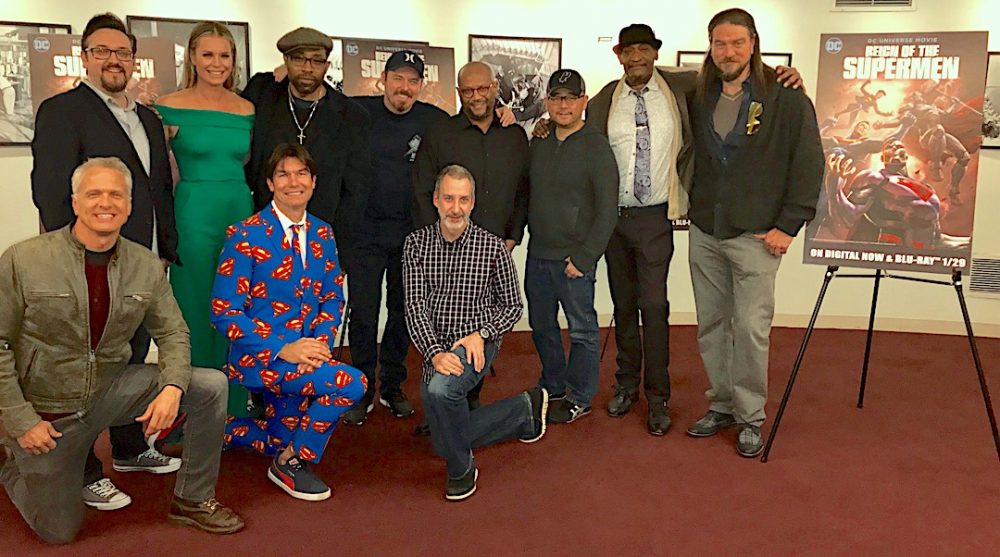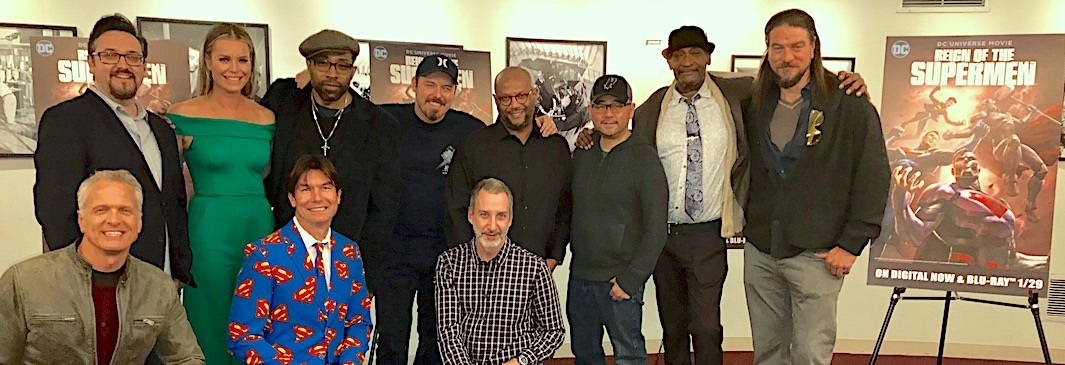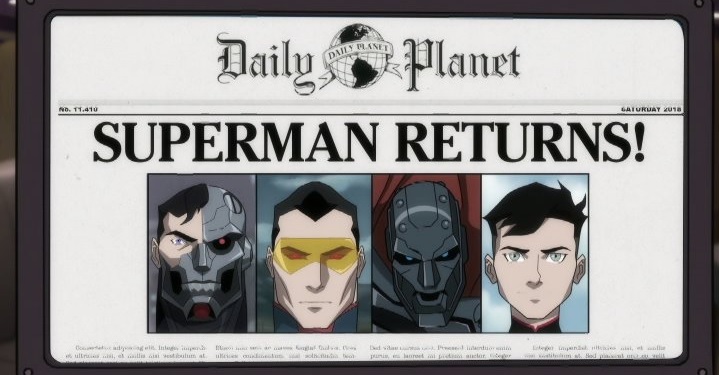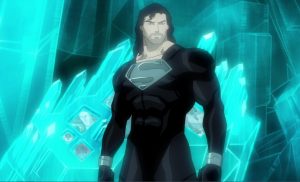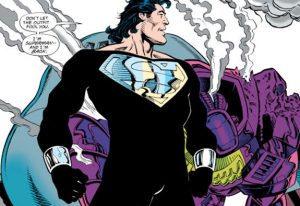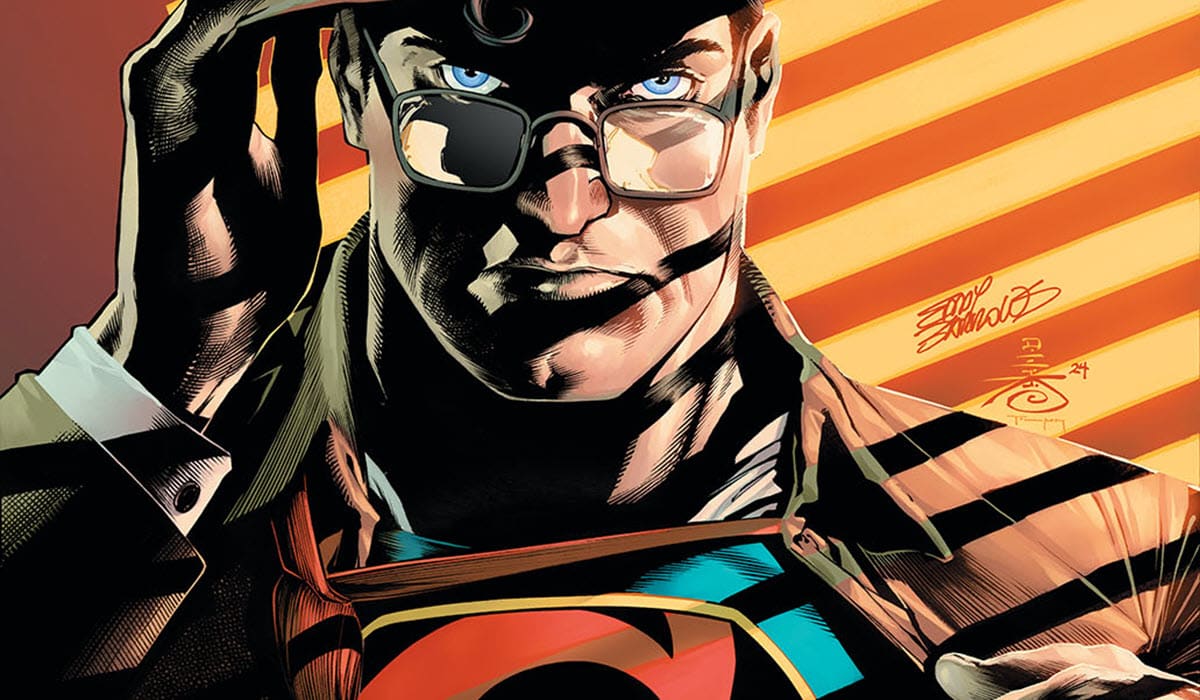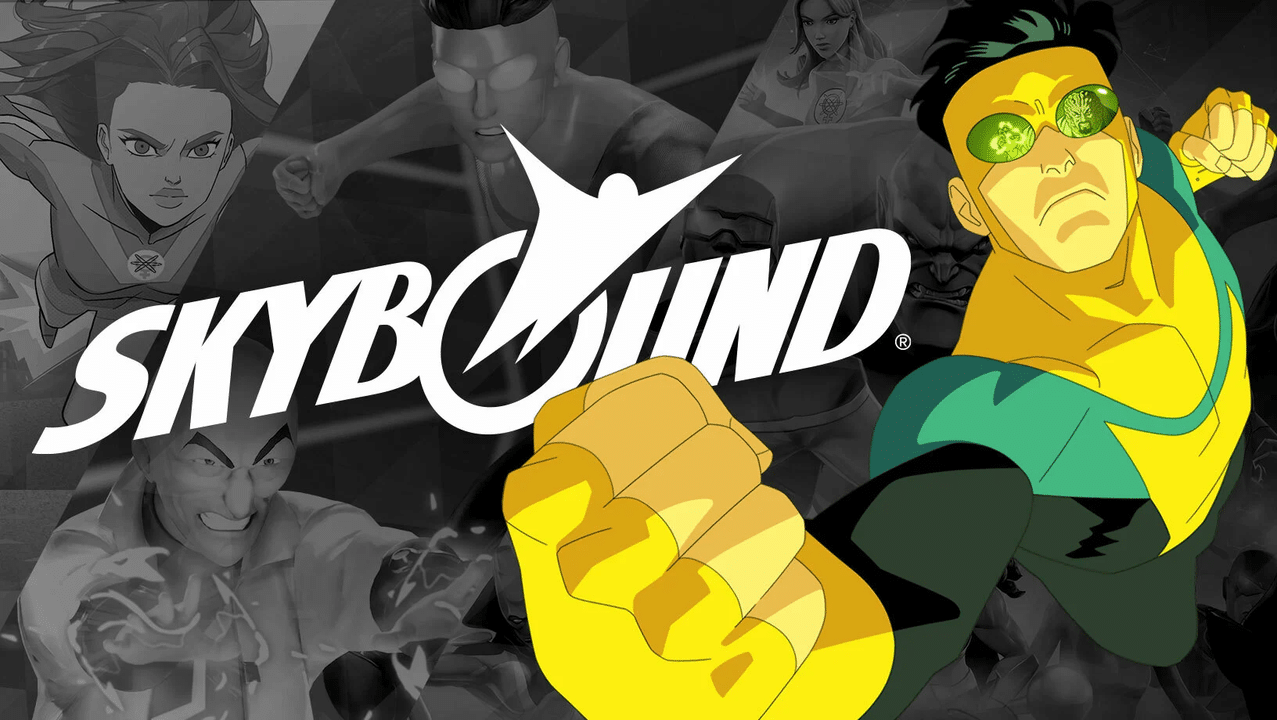Legacy characters taking up the mantles of classic superheroes are a staple of comics particularly that fondly remembered halcyon era known as the 90’s. From Peter Parker clone Ben Reilly as the new Spidey at Marvel to Jean-Paul Valley donning Batman’s cowl, it’s a trope we see time and again. Of course, the Man of Steel had them all beat when not just one but four substitute heroes attempted to replace Superman after his shocking death. In the now infamous “Reign of the Supermen!” storyline from DC Comics, four pretender Supermen appeared—Steel (The Man of Steel), Cyborg Superman (The Man of Tomorrow), Superboy (The Metropolis Kid), and Eradicator (The Last Son of Krypton)—before the original Big Blue Boy Scout returned from the dead. Though elements of “Reign” have been repurposed in various media, only the recently released Reign of the Supermen animated film does the story justice by featuring all four Supermen substitutes on screen together for the first time. During the NYC premiere at the Director’s Guild Theater, The Beat was fortunate enough to talk with the cast and crew about adapting the storyline for a new audience executive producer James Tucker, director Sam Liu, screenwriters Jim Krieg and Tim Sheridan, character designer Phil Bourassa, and voice actors Jerry O’Connell (Superman), Rebecca Romijn (Lois Lane), Patrick Fabian (Hank Henshaw/Cyborg Superman), Cress Williams (Steel), Charles Halford (Bibbo Bibbowski and The Eradicator) Tony Todd (Darkseid), and Nyambi Nyambi (Martian Manhunter) about translating the comic for a new audience.
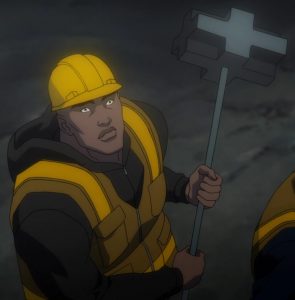
Since taking over as Supervising Producer of DC Animated Features in 2013, James Tucker has been instrumental in creating a DC Animated Movie Universe (DCAMU) shared continuity that began with 2013’s Justice League: The Flashpoint Paradox. While the early animated features took cues from DC’s New 52 publishing initiative, the animated features of the last few years have utilized the wider DC library as is the case with Reign. Some may recall that John Henry Irons before adopting the Steel moniker made a small cameo in Justice League: Throne of Atlantis from 2015. According to Tucker, the intention was to plant seeds for potential future appearance down the line. “I’m the only constant from movie to movie. So a lot of continuity falls on me to remember since different directors and writers work on different movies that we’ve done,” said Tucker. “No one has the full picture but me. That’s the reason he was in Throne because I knew there would be pressure for us to eventually do Death of Superman and then Reign. It was intentional, I just didn’t know when he would pay off. It’s all about building continuity when we can.”
As Tucker mentioned, a myriad of directors have put their signature stamp on the DCAMU but perhaps none more than Sam Liu, one of the most prolific directors in the industry, certainly where DC Animation is concerned. Liu is no stranger to this animated universe having directed five films in the line thus far including the preceding Death of Superman. For him, the benefits of a shared continuity outweigh any perceived obstacles. “I feel that the continuity actually helps us because we don’t have to reintroduce characters.” said Liu. “Hopefully the fans that have followed along with us already know who these people are, so we can just get on with the plot. I don’t look at them as a hindrance.”
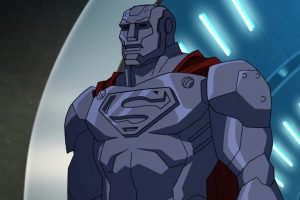
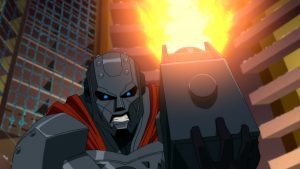
If there’s one person who’s helped define the quintessential look of DC’s pantheon of heroes in animation of the last decade it’s lead character designer Phil Bourassa whose work can not only be see in the DCAMU but newly returned Young Justice franchise. Despite designing the same character for different continuities, Bourassa is able to make each unique to their own respective universe. However with the case of aforementioned Steel, if the version in Reign seems similar to his depiction in Young Justice it’s not surprising. “The funny thing is that they’re the exact same model. They’re just being reinterpreted by different animation studios,” Bourassa admitted. “But that’s only if the design suits the story needs of both projects without compromise. If it doesn’t serve the narrative needs then of course we change it. But because we’re a small team whether it’s the series or the movies, a very small team [with] very limited resources, sometimes you have to make a more economic choice.” Morever, Bourassa sees animation as “the art of economy” and views his role as “creating a blueprint for the storyboard artists and animators to follow.”
Fans hoping to see Superman to sport his black costume and long luscious hair, consider your wish granted. As much as the filmmakers attempt to modernize the storyline, they still can’t help but embrace the 90’s cheese according to Bourassa. He conceded that he almost wished this was a standalone film outside of continuity so they could fully embrace that Dan Jurgens look.
Back in October at NYCC, the cast and crew understandably had to keep specific plot details close to the vest such as changes from the source material, most notably the inclusion of Darkseid. In the film it’s revealed that the Cyborg Superman is merely a pawn in Darkseid’s Machiavellian plans to invade the Earth as opposed to Cyborg Superman partnering with the alien warlord Mongul and destroying Coast City. Having already established the ruler of Apokolips in this universe, it made sense to Tucker. Screenwriters Jim Krieg and Tim Sheridan echoed Tucker’s sentiments. “At what point when you’re doing a movie do you sacrifice screen time of the four Supermen to introduce and explain Mongol to an audience who may not be familiar with him,” said Sheridan. “It was a real balancing act. People knew Darkseid. He was able to tell the story better.” Plus, as Krieg joked, it’s hard to take Mongul seriously as a threat since he’s basically wearing chinos!
Voicing the ultimate embodiment of evil in the DC Universe is none other than Tony Todd who previously played Darkseid in LEGO DC Super Heroes series of films. Whereas the LEGO version was tongue-in-cheek and kid friendly, this iteration is a return to the “serious” Darkseid. “This version is a little slower, a little more methodical, very plotting, very cunning. It’s like playing chess on an intergalactic scale,” described Todd.
It may be hard to fathom after hearing their spectacular performances but this was the first animated voiceover project for some in this all-star cast. Patrick Fabian found voiceover a humbling experience and just as physically challenging, if not more so, as working in live-action. Additionally, Fabian praised voice director Wes Gleason for his ability to guide a tyro such as himself. Cress Williams who’s best known as Black Lightning on the eponymous show on the CW, noted that he has been a fan of superheroes since he was a kid watching the Super Friends cartoon and has been actively seeking voiceover roles. “I’ve been auditioning for voiceover for quite some time. I definitely audition more than I get so I was really happy to get this job. I grew up watching cartoons and I still watch them today. I so badly wanted to be a part of something.”
Williams isn’t the only cast member who’s spent some time in the DC Universe before this project. Charles Halford, who plays the emotionless Eradicator (fondly known as the Visored Superman) as well as Supes fan/friend Bibbo Bibbowski , has an extensive resume of DC related projects both in voiceover and live-action, from Grodd in Injustice 2 to Jemm from Supergirl. An unabashed comic fan since childhood, Halford felt voicing Bibbo came more naturally to him than Eradicator. Having voiced quite a few DC villains, Halford is nuanced in the way he approaches these various antagonists. “One trick to playing villains is not to be the villain,” he said. “So I don’t think Eradicator is doing anything he would perceive as wrong, the same with Jemm or Grodd. They’re all kind of on noble pursuits. To them, they’re doing everything right.”
Counter to expectations as well, Fabian doesn’t play Cyborg Superman as a typical cold robot. “I never thought of him as a robot at all. I always thought of him as just Hank Henshaw but robotic-enhanced. The heart and the mind are only being extenuated by the bionics and electronics, ” said Fabian. “We know Hank Henshaw’s backstory as well. These guys have written such a good script. There’s an arc that Cyborg Superman gets. In the midst of these fights there are moments when people feel for Cyborg Superman. He’s coming from a place of love which sounds like a funny thing to say with a movie like this but it’s true.”
Undoubtedly, the most enthusiast cast member has to be the voice of Superman himself Jerry O’Connell who wears his love of the role on his sleeve (literally seeing as how he showed up to the premiere in a Superman themed suit and tie). As excited as he is to voicing the most recognizable superhero, O’Connell took his performance incredibly seriously such as making the conscious decision to tweak the performances between Clark Kent and Superman.
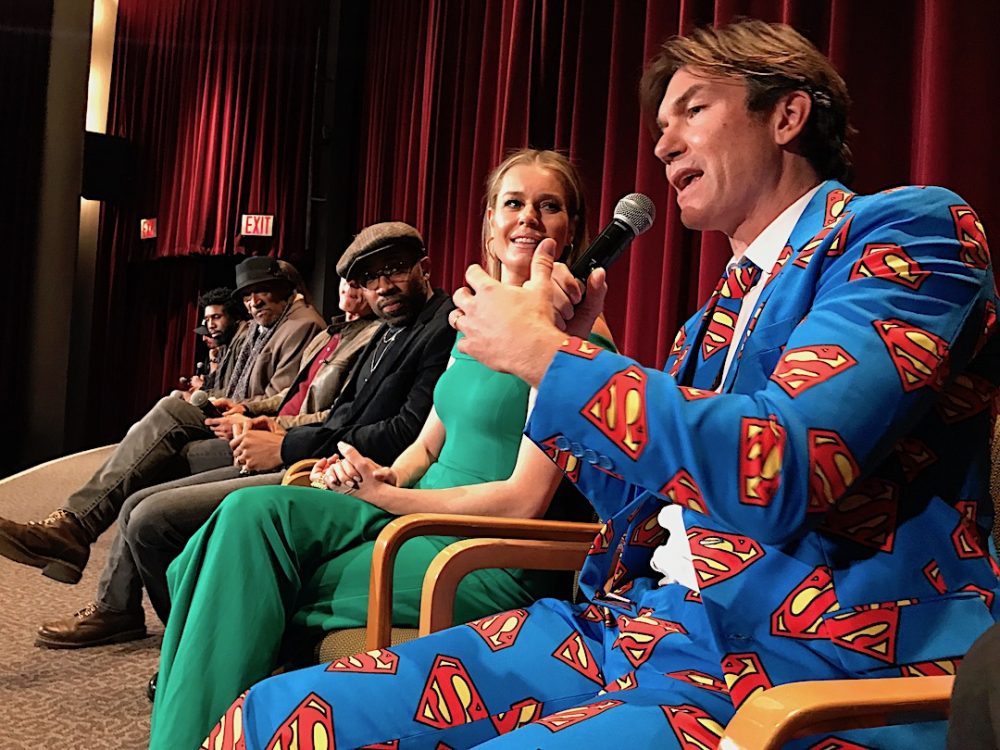
As the saying goes, behind every great man there’s a great woman or perhaps super is the appropriate adjective and Lois Lane most assuredly gets her due in this film. O’Connell argues that Reign is actually more of a Lois Lane movie than a Superman movie and not just because he happens to be married to the voice of Lois, Rebecca Romijn. Lois Lane may not be your standard superhero, but Romijn believes Lois’ power is being a truth seeker and reveled in playing the “badass” side of the Daily Planet reporter. Surprisingly, O’Connell and Romijn not only recorded their parts separately, as is typical in the industry, but didn’t go over or run their lines together at any point so were completely unaware what how the other played their part until the final product.
Regarding an article that proclaimed Reign of the Supermen as the anti-Into the Spider-Verse, screenwriters Krieg and Sheridan offered the perfect response. “It said that the theme of Into the Spider-Verse was anyone can wear the mask. We are all Spider-Man. And the whole premise of this is you can try to be Superman but unless you’re Superman, you’re not really Superman. I don’t think we’re saying you can’t be a hero,” said Krieg. Sheridan added, “You can be a hero but there’s a cautionary element to this and that is when you take shortcuts. Each of the four Supermen and other characters in this story use technology to shortcut the process of becoming a her. There is a lesson in that for everyone. Superman happened organically. You can’t just skip the process.”
It’s the perfect deconstruction of the character and illustrates when it comes to the Man of Steel, accept no substitutions.
